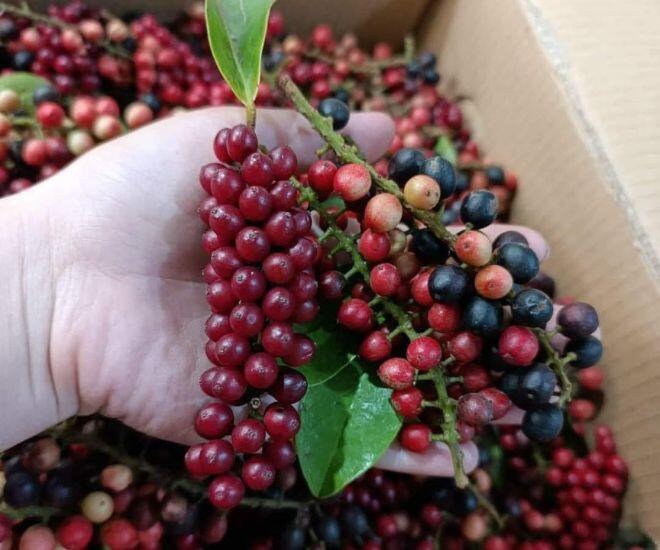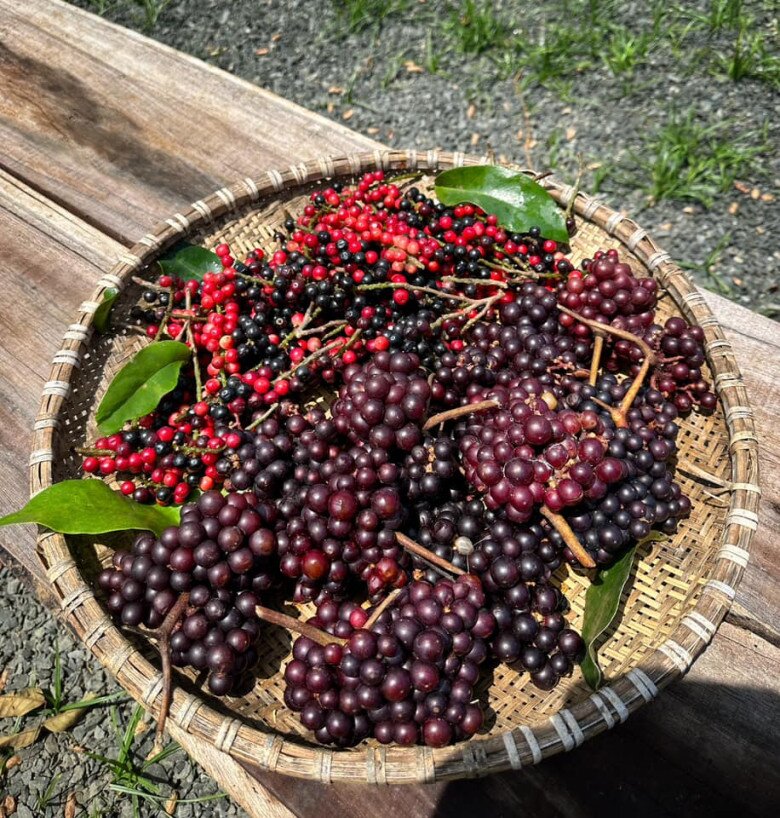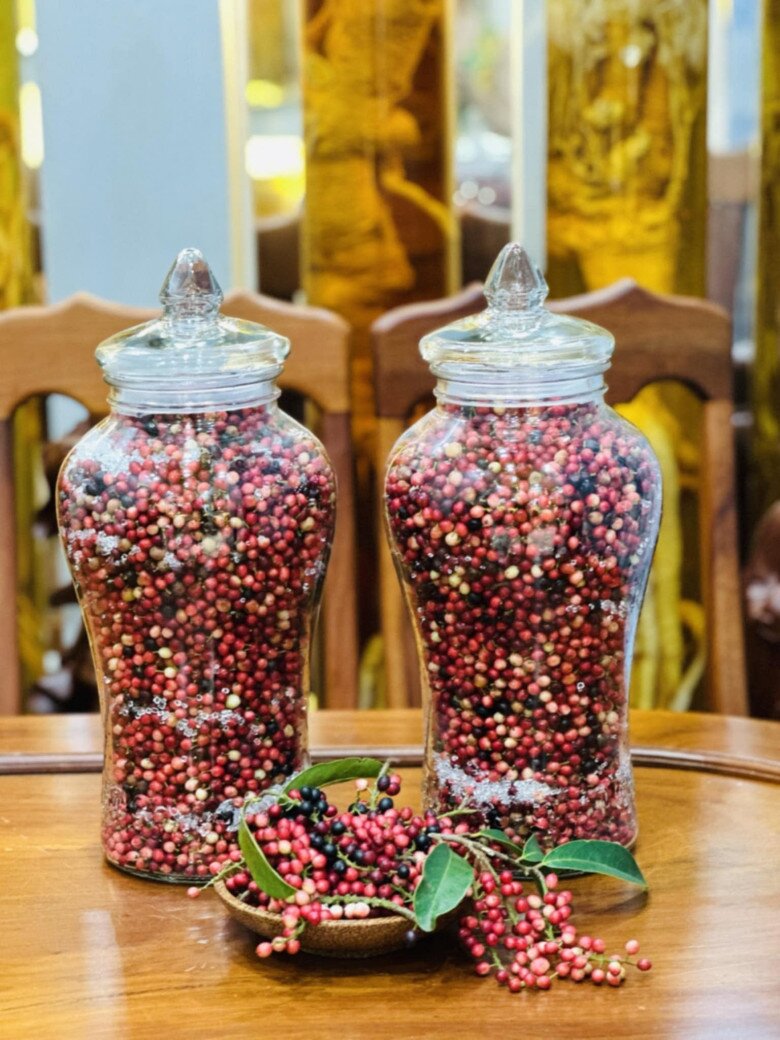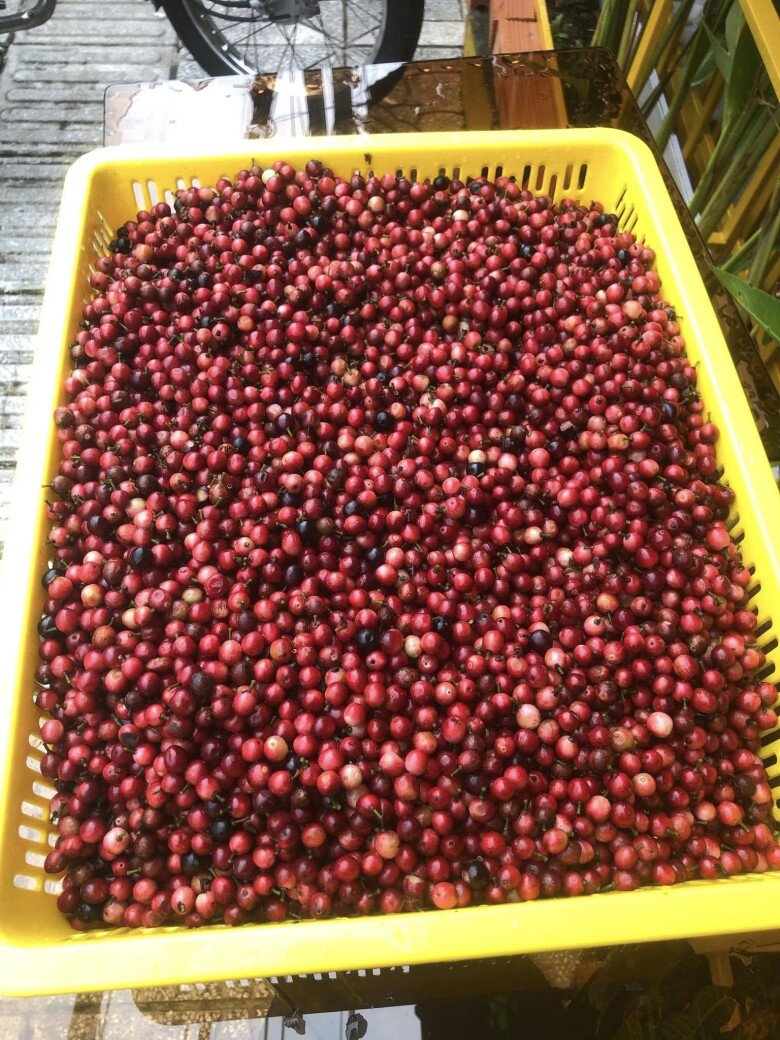
The Mayom tree, also known as Chòi Mòi, is a woody plant that can grow over 10 meters tall, with numerous branches. Its leaves are oval-shaped, smooth on top, and covered with fine hairs underneath. When young, the leaves have a slightly bitter and sour taste, often used by locals as raw vegetables, boiled greens, or stir-fried with other wild vegetables.
Mayom fruits grow in clusters, starting green when unripe, turning reddish when nearly ripe, and deep black when fully ripe, with a sweet and refreshing flavor. From March to June, the tree blooms, but the peak fruiting season is in July. Though smaller than a chopstick, the vibrant clusters of Mayom fruits captivate with their unforgettable sweet and tangy taste.
Widely distributed across regions, Mayom trees thrive along riverbanks and rice fields in Southern and Central Vietnam. In the North, they are common in the Northwestern mountainous areas like Yên Bái, Sơn La, and Hòa Bình. There are several varieties, including common Mayom, purple Mayom, shrub Mayom, indented-vein Mayom, and sour Mayom, with the common variety being the most prevalent.

For children in the Seven Mountains region, the rainy season is a time for snacking on various forest fruits. Among these, Mayom is a simple yet beloved treat. Adults climb trees to harvest the fruits for the children, who eagerly await the ripe red clusters. Paired with a bowl of salt and chili, Mayom becomes a snack bursting with sour, spicy, salty, and sweet flavors.
The flavor of Mayom fruits is uniquely forest-like: slightly sour, mildly sweet, and unmistakable. Many enjoy eating entire clusters to savor the harmonious blend of flavors from multiple fruits at once. For families in the foothills, Mayom was once a cherished childhood treat, simple yet rich in sentiment.
Remarkably, nearly every part of the Mayom tree is usable. Young leaves are eaten raw, boiled, or stir-fried; unripe fruits enhance salads; mature fruits add sourness to soups; and ripe fruits are enjoyed as snacks. Locals also use ripe fruits to make jams, wine, or herbal drinks.

In Thailand, the ripe fruit pulp has been studied to create antioxidant-rich dissolvable herbal powders. Locally, Mayom leaves are used in folk medicine, mashed and applied to relieve joint pain.
Today, Mayom trees are less common due to agricultural expansion, making it challenging to find their leaves or fruits. Many traders must pre-order and search mountainous areas to supply the market.
Mayom is more than just a forest fruit; it’s a piece of collective memory. It evokes childhood flavors for mountain children during simpler times and serves as a leisurely snack for adults on rainy afternoons. Amidst modern treats, Mayom’s rustic charm remains precious, reminding us of a simpler era when people lived closely with nature, cherishing its humble gifts.

From a wild tree, Mayom has become a specialty of the Seven Mountains region. Though rarer today, its distinctive sweet and sour flavor, along with its culinary and medicinal value, has secured its place in the lives of mountain communities.
For visitors, a trip to An Giang and the Seven Mountains offers more than just scenic beauty and cultural richness—it’s a chance to taste the unique forest fruit, Mayom. This experience highlights the diversity of local cuisine and leaves a lasting impression of the serene, bountiful land of Southwestern Vietnam.






























